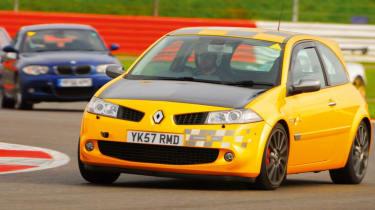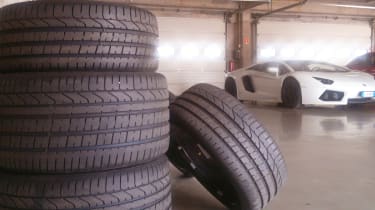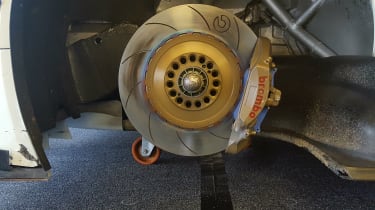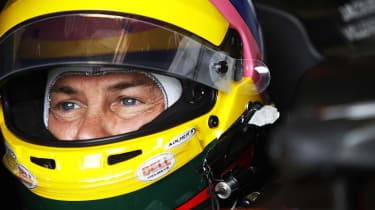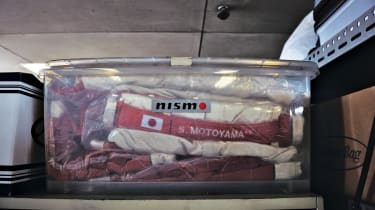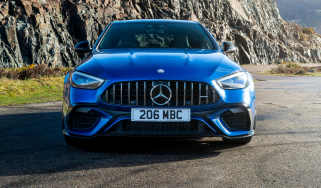Track days: everything you need to know
A track day can seem daunting to newcomers, but we've built a comprehensive guide to help you prepare
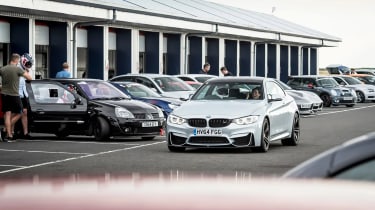
Your first foray onto the track will certainly be thrilling but, equally, it’ll be a bit scary and potentially intimidating. Your first taste of circuit driving is a leap into the unknown, a new adventure; your heart will be pounding, adrenalin will be coursing through your veins, and your stomach will be battling with a whole swarm of butterflies.
It won’t even be particularly enjoyable at first. We’ve all been there, but we also know that the fear quickly dissipates and driving on track rapidly develops into one of the most exciting, rewarding and pleasurable things you can spend your money on. However, that first hurdle is a big one; there are plenty of questions to be answered and experience that will help you get more out of your track time takes time to accumulate.
> How to drive on track: trackday driving masterclass
That’s why we’ve compiled a list of the most commonly asked questions about track days and driving on track. Below you’ll find the basic information you need on everything from preparing your car for a track day to getting the proper insurance, improving your driving skills and buying the right equipment. Click the links and jump through to our more in-depth track day guides for a more comprehensive look at the key issues...
Track day Insurance & car warranties
Can I get insurance?
Yes. Your current insurance company may even cover you on your existing policy. This varies though from provider to provider. They may extend the cover for the day for an additional fee and they will probably increase the excess. If they won’t cover you at all – or you would rather not risk your no claims bonus – there are a number of companies who specialise in track day cover.
If you go down the specialist route, you don’t have to insure the full value of the car. However you should be realistic and we advise that you take out enough cover to provide for most bumps and scrapes; we suggest at least half the value of the car.
Ex-racecars or modified track day cars are seen as a higher risk by these brokers, but on the plus side they are cheaper to repair than road cars and generally their total value is less, so they can be more cost-effective.
> Track day insurance – everything you need to know
What happens if someone else drives into me and they're not insured?
Nothing. You are responsible for your own car, which is another reason to ensure you’re covered for this eventuality. With strict track driving rules, however, this is a very rare occurrence.
How will track driving affect my warranty?
Good question, and a tricky one to answer, especially since manufacturers often appear unsure themselves! Most will honour any mechanical failure as long as these components have not been ‘abused’. The definition of abuse is, it seems, open to interpretation. Check the warranty small print and contact them if you need further clarification.
Basic track day questions answered
Can I take my standard road car on track?
Absolutely. There are no minimum requirements, and our advice is to keep the car standard to begin with. After a few trackdays you’ll start to get a feel for what changes, if any, will make it even more fun. Plenty of performance cars today are track-ready out of the box, and are a set of stickier tyres away from the real deal.
Which are the best affordable (i.e. cheap) road cars to drive on track?
Hot hatches are effective, small roadsters are entertaining, Caterhams are quick, coupes are compelling and big saloons can be amusing. The bottom line is that, whatever you drive, it’s going to be fun. The list of options is long and varied, the following are popular choices:E36 and E46 3 Series, MX-5s, Elises, MR2s, Renaultsport Clios.
> How to choose a cheap car for track driving
How much will it cost to take, say, a hot hatch on an average trackday – petrol, tyre and brake wear, etc?
Not as much as you might think – if you drive with a degree of mechanical sympathy. Hammering round for lap after lap, stamping on the pedals, will destroy brakes and tyres very quickly.
However, if you drive smoothly they can last well. Don’t brake at the last possible moment, be progressive, especially if braking from high speed into a slow corner. If you start to feel some brake fade or the tyres getting hot, back off and give them time to cool down. Always do a cooling-down lap anyway, don’t stay out for more than ten laps at a time and don’t apply the handbrake once parked. Reckon on a couple of tankfuls of fuel.
What basic preparations should I make?
Your car needs to be in top order – it will be driven harder for longer than it has ever been before. Ensure the wheelnuts are correctly torqued and that there is plenty of meat on the brake pads. Check that all the fluid levels are are up to the mark. Your oil level should be at the top mark without being over-filled, and you should check it regularly through the day. Tyres should be pumped up to the manufacturer’s recommended pressures.
Should I uprate the brakes?
This is a good idea, particularly the pads. This is quite cost effective (usually less than £100) and you will gain an increase in stopping power as well as a greater resistance to fade.
What can I do to turn my standard road car into a trackday weapon?
After the brakes and tyres, take a look at the suspension. This is not recommended for beginners, but experienced drivers looking to move the game on will gain from adjustable platforms.
Again the specifics depend on the car of choice but, in general terms, lowering and stiffening the springs, uprating the dampers and fitting firmer anti-roll bars will improve your cornering capabilities. However it will have an adverse effect on the ride quality on the road.
Don’t upgrade the engine until you have looked at every other aspect of the car first – it’s the least cost-effective modification, so ignore the temptation to spend your money here.
Is it worth stripping trim out, removing the spare wheel, etc, to save weight?
It’s always worth leaving the spare wheel in the pit garage, but unless you are turning your car into a trackday special, leave the trim alone.
> Track day tips: noise limits explained
Track day safety and equipment
How do I make my car safe? Do I need a rollcage, fire extinguisher, etc?
Safety items are always recommended, although a rollcage is an extreme modification and not necessary. An extinguisher is a good idea, and before getting a cage we would suggest a good race seat with a race harness. This can also help you feel more ‘connected’ with the car.
Do I need to buy a helmet and race-suit?
Not necessarily. At many trackdays you can borrow a helmet (the minimum requirement), which could be a good idea for a first-time circuit driver. However if you start to attend regularly we suggest you buy your own, and you should buy the best you can afford.
Driving boots and gloves are a good idea as they increase your feel for the controls. A racesuit is not necessary, although you should wear comfortable clothing (cotton preferably) and your arms and legs should be covered.
What should I take with me – tyre pump, basic tools, glass cleaner, sticky tape?
Yes to all of those.
Advice for track day novices
Will I feel out of my depth first time out?
Depends which organiser you use. The best ones will ensure that novices are looked after and are given extra instruction by ARDS qualified racing instructors for more info. Days that run ‘sessions’ are also better for beginners as novices will all be on track together and the more experienced drivers in faster cars will not be driving at the same time.
> evo Leaderboard lap times – the world's fastest cars tested on track
What can I expect when I get to the track – how does it actually work?
The day begins with the signing of an indemnity form and the allocation of wristbands. No-one is allowed out on track without one. Then there will be a briefing where the rules will be explained along with meaning of the flags and safety procedures.
Any circuit familiarisation will then take place before the circuit opens and track time begins. Overtaking rules are strictly enforced (usually only on the left and never in the braking zones or corners) and dangerous driving will see you sent home.
Which circuits are best for novices?
Those with wide, open corners which provide clear sight-lines. Donington, Silverstone and Snetterton are good choices.
Are airfield trackdays any good?
Depends what you want from the day. If it’s a cheap, wide stretch of tarmac to thrash around on, then they can be good (like Bedford Autodrome). They don’t provide the thrills that a real circuit can provide (think Rockingham), being flat and featureless. It’s like comparing playing golf on a championship course to hitting balls on a driving range.
Find more on track cars, track days and track driving through the links below...
